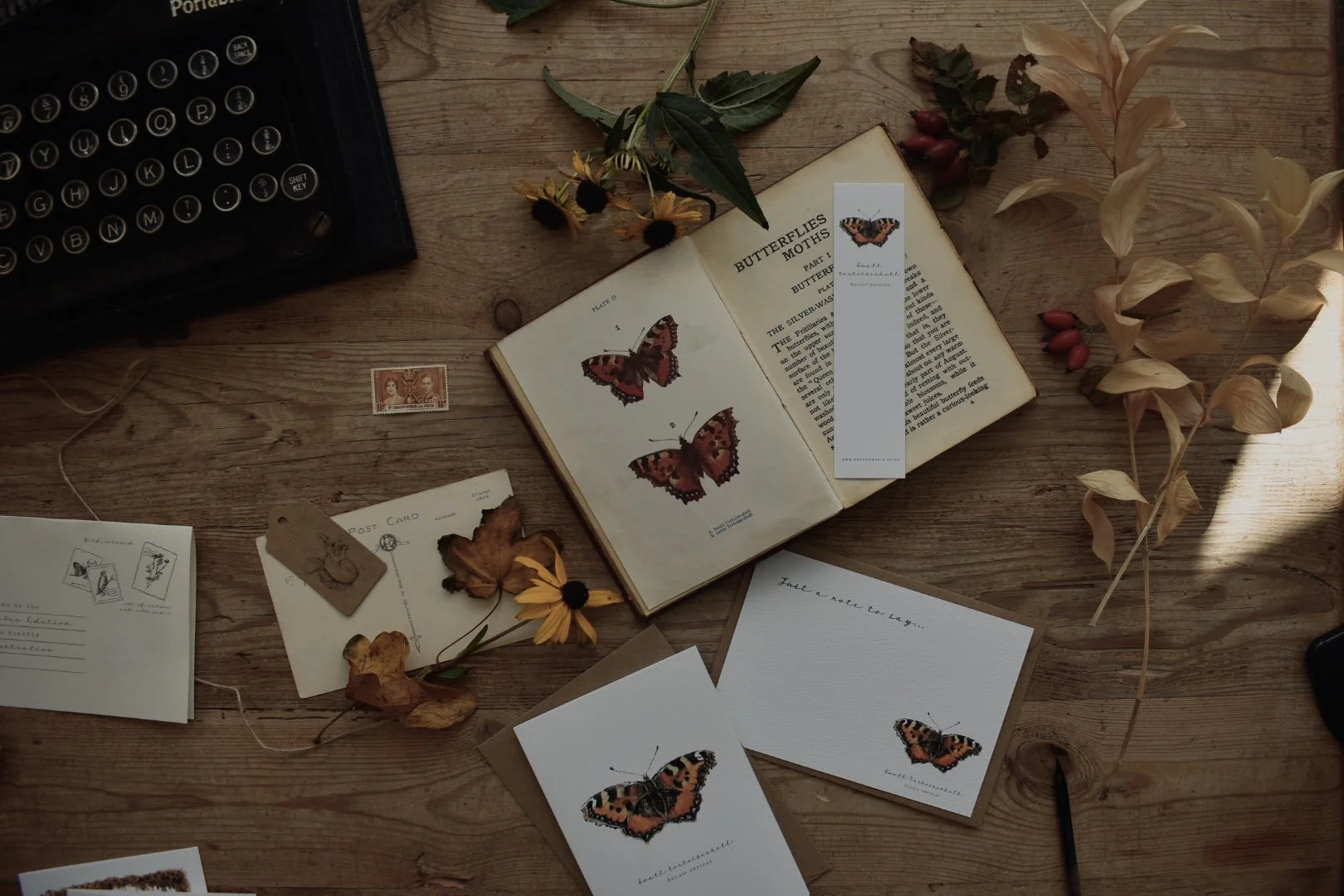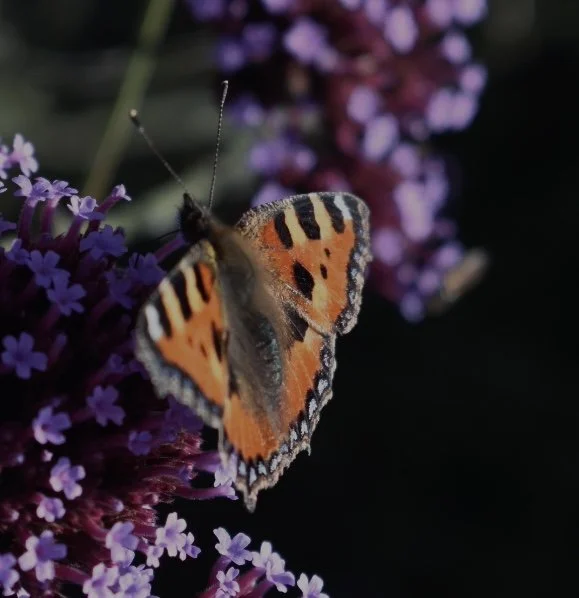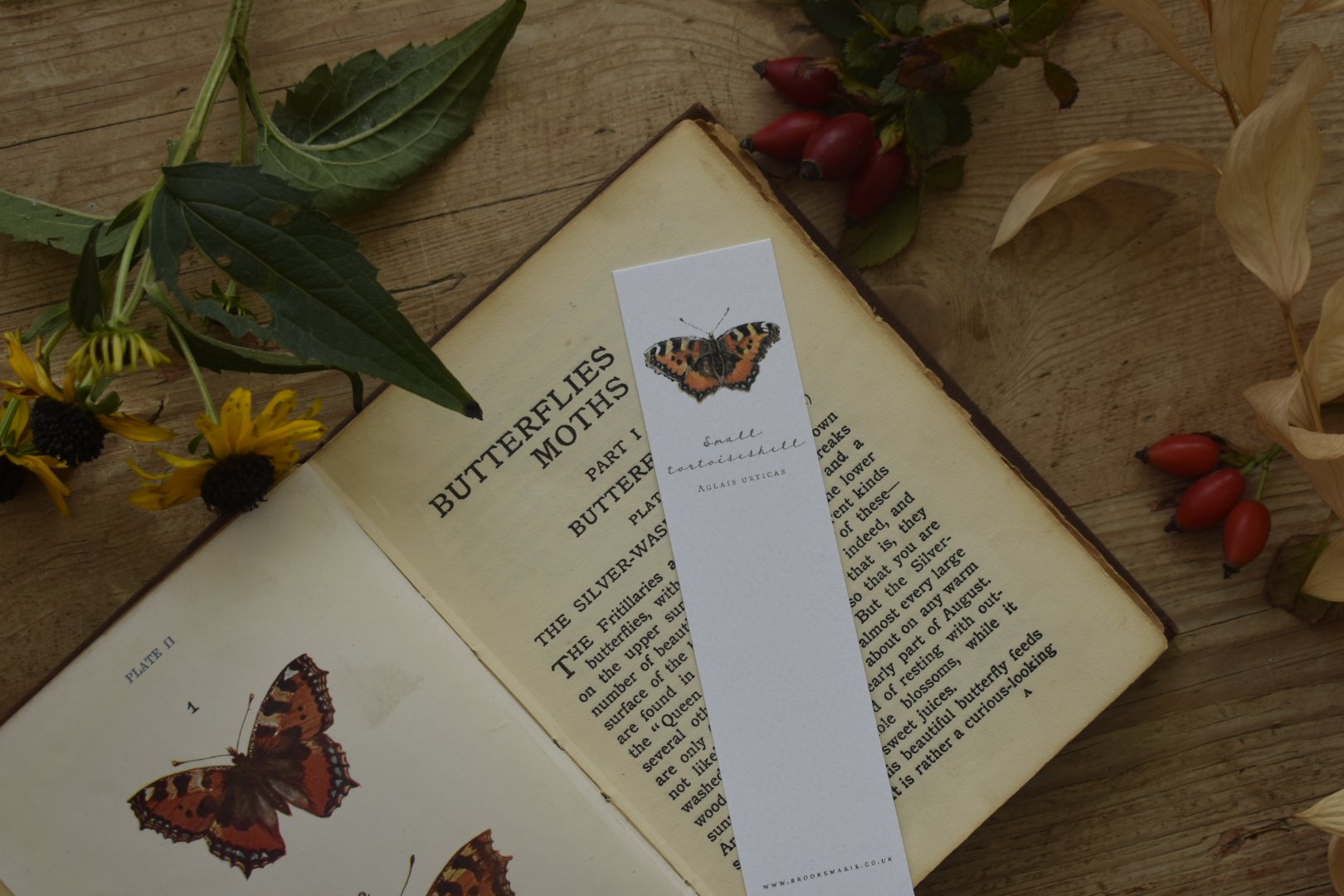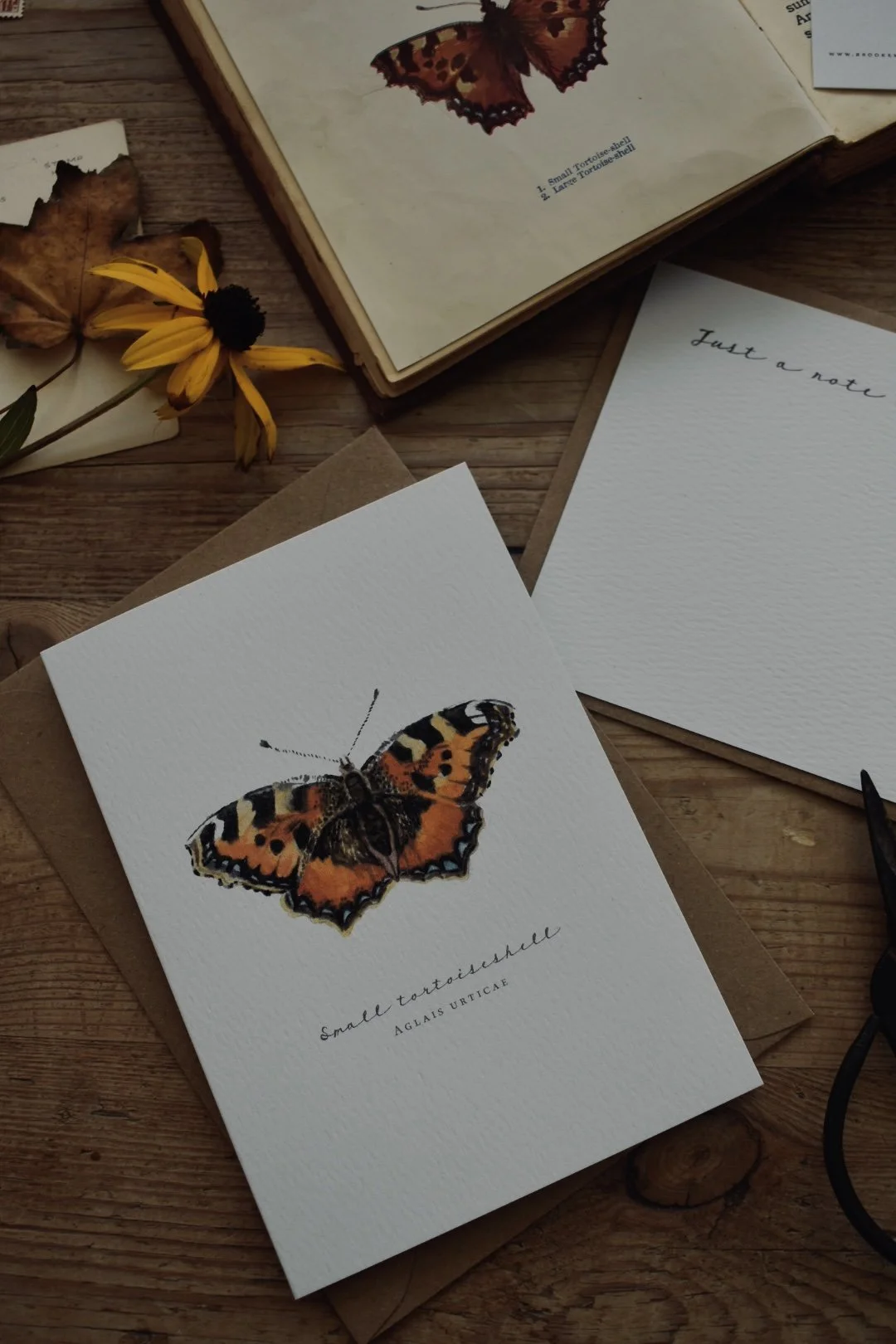October Entomology - Small Tortoiseshell
This month in The Monthly Illustration Club the small tortoiseshell is the feature insect of the bundle. Here’s a little info about this beautiful creature…
Small Tortoiseshell
Aglais urticae
Family: Nymphalids
Wingspan: 4.5-6.2cm
On the wing: January to december
It’s taken me quite a while to familiarise myself with this butterfly, if I saw a painted lady or one of these I’d have to really concentrate and consult google but now I think I have it down. My brain sees those top wing markings as small stripes which you can spot quickly on a moving butterfly. It also has the blue on the wing edges. If you’re not sure between this and a larger tortoiseshell then just knowing that the latter is near enough considered extinct makes it an easier job for you.
The small tortoiseshell is one of the most widespread butterflies in the British Isles. It’s a medium-sized colourful butterfly that is often found in gardens, especially in gardens with Buddleia and other plants it loves to feed on. It can be seen all year round, having 2-3 broods in a season. You might find it overwintering in your shed or garage.
The caterpillars feed on common nettle and will build a communal web on the top of the plant, as they grow, they will disperse to new plants and create new webs. (I find this fascinating! My 2023 mission is to find one of these webs, we certainly have plenty of nettles here!)
Both male and females are very similar in appearance being a red-orange with patches of black, white yellow and blue. In the afternoons the male will find himself a small territory and will bask with his wings open waiting for a passing female. The male will approach the female and drum his antennae on her back making a drumming sound audible to us humans! Fascinating! They won’t mate until early evening after hours of him following her around, drumming on her and basking together, (I wonder what he says to her? Oh, you do have some lovely blue spots, and those antennae! Or maybe he courts her with humour, we will never know.) she will eventually lead him into a nettle patch or some other vegetation and then they’ll make babies! He won’t leave her straight away either, the gentleman will at least spend the night with her before he goes off chasing some new conquest.
Extract taken from ukbutterflies.co.uk
“This butterfly has always fluctuated in numbers, but the cause of a recent decline is not yet known, although various theories have been proposed. One is the increasing presence of a particular parasitic fly, Sturmia bella, due to global warming - this species being common on the continent. The fly lays its eggs on leaves of the foodplant, close to where larvae are feeding. The tiny eggs are then eaten whole by the larvae and the grubs that emerge feed on the insides of their host, avoiding the vital organs. A fly grub eventually kills its host and emerges from either the fully-grown larva or pupa before itself pupating. Although the fly attacks related species, such as the Peacock and Red Admiral, it is believed that the lifecycle of the Small Tortoiseshell is better-synchronised with that of the fly and it is therefore more prone to parasitism.”





